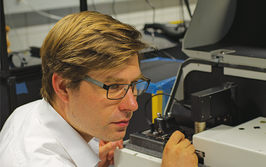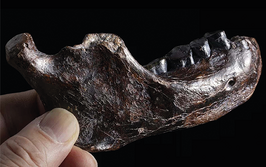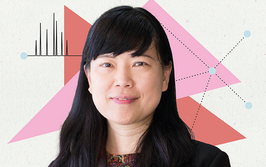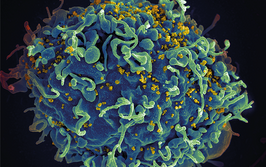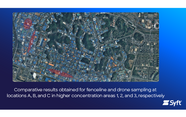Lloyd M. Smith

Professor of Chemistry, University of Wisconsin-Madison, USA
A problem interdisciplinarians should tackle? I'm very interested in the technical challenge of comprehensive proteoform analysis in biological systems. Proteoforms are the different molecular forms of proteins, reflecting genetic variations, RNA splicing processes, and post-translational modifications. As the primary effectors of function in biology, it is crucial to understand and monitor the nature and regulation of these many protein forms, and their changes in response to perturbations. It is remarkable that so much still remains to be done to reveal the hidden protein-level secrets of biology despite the increasing sophistication of biomolecular analysis tools.
The secret to a successful interdisciplinary collaboration?There are several important elements. First, you need a partner in the other field that you click with personally. Someone who enjoys learning about what you do and is willing to make the effort needed to understand it, and conversely, who has the patience to explain to you (sometimes over and over) concepts and problems from their field that can seem remedial to them.
Second, you need to be willing to spend the time to establish communication and mutual understanding. Then, the two (or more) of you need to arrive at a conceptualization of both a goal worthy of pursuit, and an idea of something you can actually do to pursue it that would be worthwhile if successful.
Finally, you need to keep that communication and interaction healthy while you try to execute your hypothesis. The process can be very interesting and rewarding, but it does require commitment and effort.
Most exciting development or trend?? I find it interesting how the nature of analytical science has become so incredibly data-rich and data-intensive. A couple decades ago a typical analytical project might involve building a home-made fluorescence detector, devising some novel chemistry, measuring something, and writing a paper on what you measured. The big result might be a couple data plots and a few hundred or thousand data points.
Whereas today, most studies are using sophisticated instruments to routinely gather gigabytes to terabytes of data in disparate areas such as imaging, mass spectrometry, NMR, electron microscopy, x-ray diffraction, and many others. Much of the work then involves the analysis of the resultant large datasets, which puts students in front of computer monitors for months rather than working at the bench. Because of this, computers/informatics have developed into such a powerful suite of capabilities that they are taking over all fields – not just chemistry or analytical chemistry. Humankind is in the midst of an exponential growth curve driven by computer capabilities, with the current time point of rapid development of AI capabilities as the sharp end of the spear.
